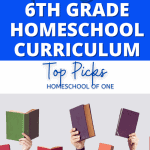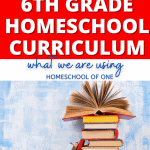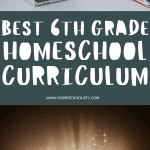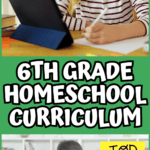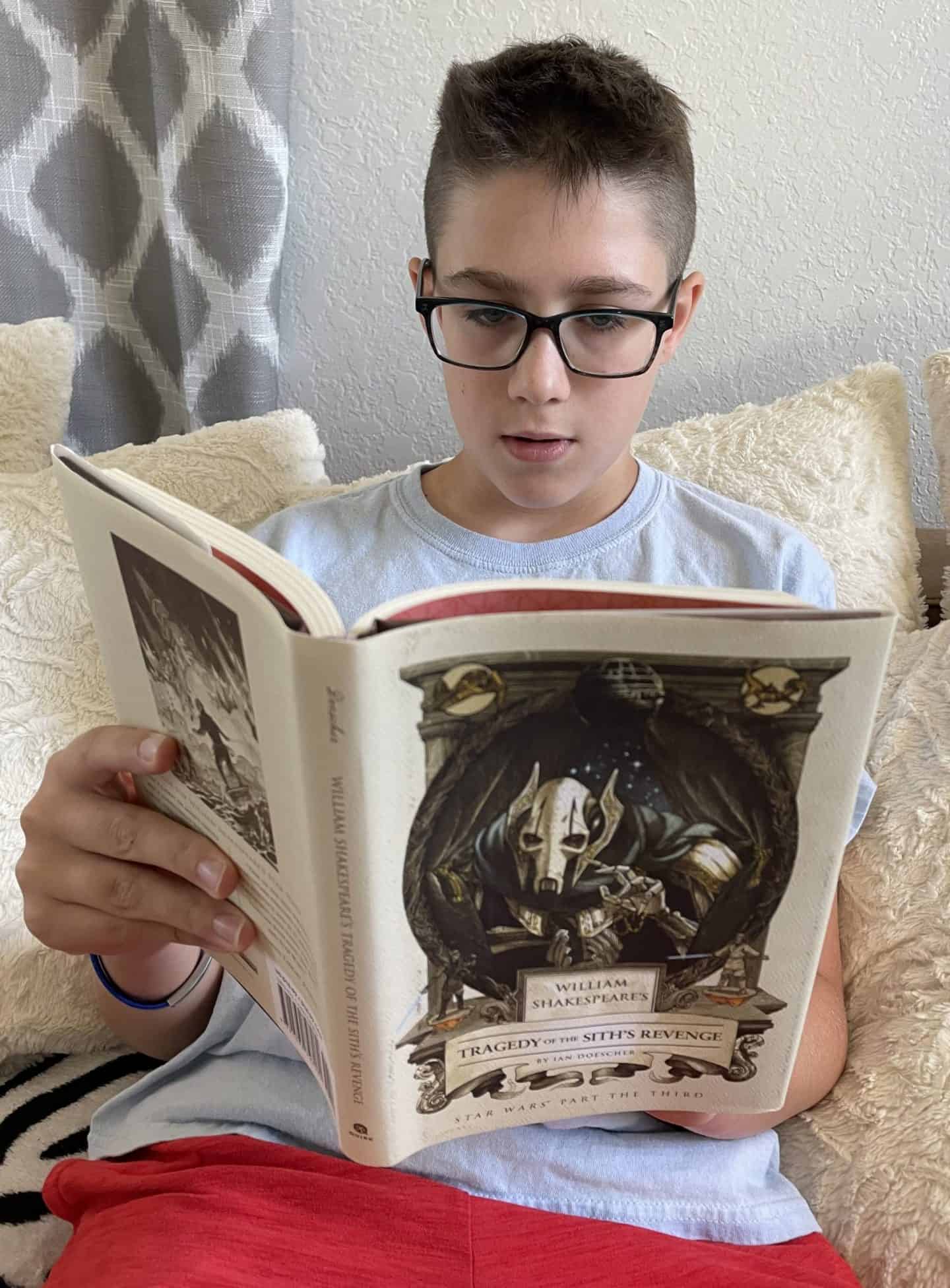Best 6th Grade Homeschool Curriculum for Every Subject
Finding the best 6th grade homeschool curriculum can feel overwhelming as kids take on more independent learning.
At this stage, they need a balance of core subjects, engaging electives, and real-world skills to stay challenged while enjoying their education.
After exploring various options, I’ve put together a well-rounded curriculum plan that supports academic growth while allowing flexibility for individual interests.
Below, you’ll find the best homeschooling resources we’ve used, along with insights on what makes each curriculum a great fit.
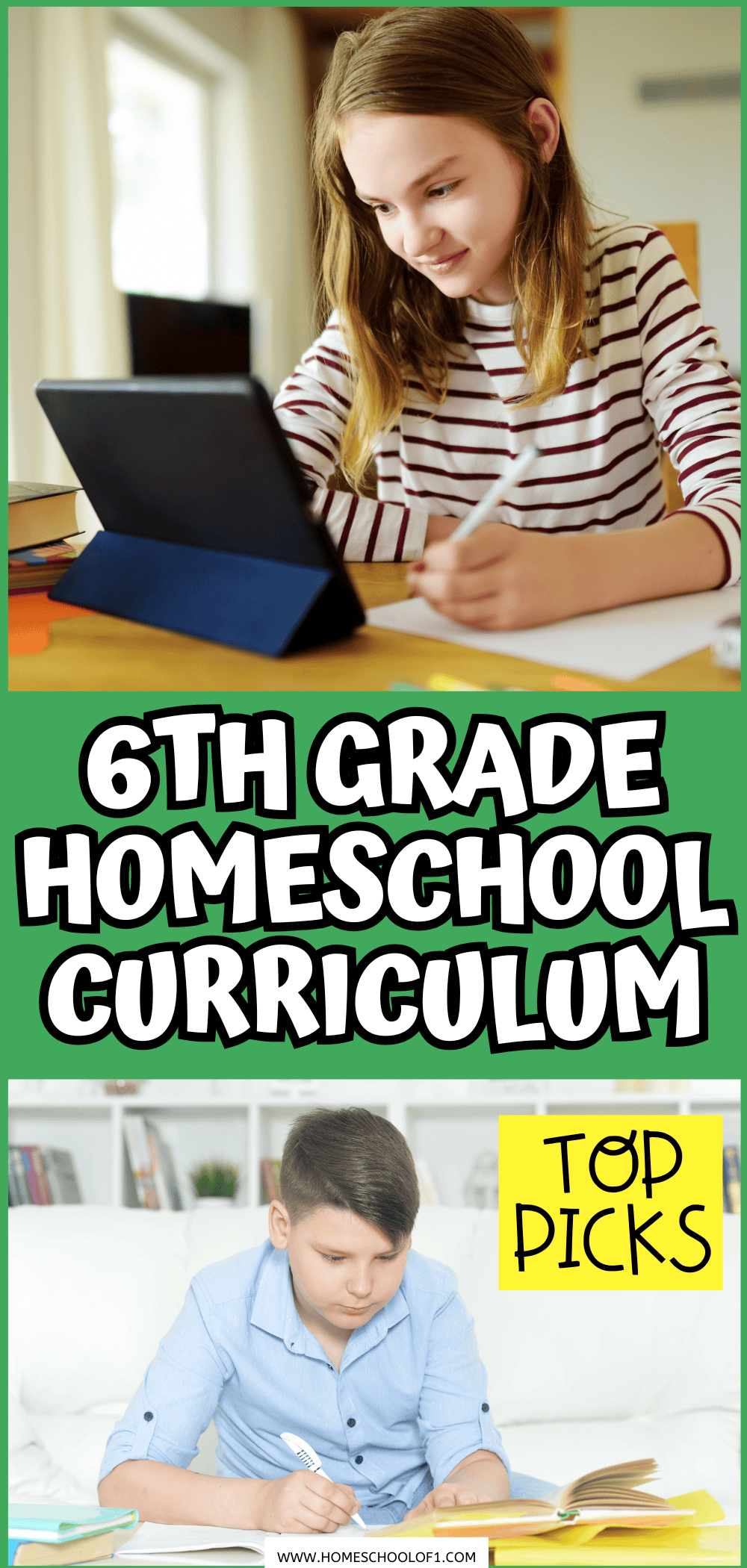
**This post may contain affiliate links. As an Amazon Associate and a participant in other affiliate programs, I earn a commission on qualifying purchases.**
6th Grade Homeschool Curriculum Overview
Sixth grade is a transition year where kids start developing more independence in their learning. Our homeschool curriculum balances structured lessons with flexibility, allowing for deeper exploration of subjects that spark curiosity.
Our 6th grade homeschool curriculum includes core subjects like math, language arts, science, and history, ensuring a strong academic foundation.
We also include electives like Spanish, coding, and music to add variety and keep learning engaging. Since real-world skills are just as important, we integrate financial literacy, typing, and life skills into our schedule.
We’ve chosen a secular curriculum that encourages critical thinking and hands-on learning. Some subjects are taught with structured programs, while others rely on literature-based or project-based approaches.
Whenever possible, we incorporate educational games, real-world applications, and field trips to make learning interactive.
Flexibility is key—we adjust as needed to fit our child’s learning style. Some days are heavily structured, while others allow for interest-based exploration.
6th Grade Math Curriculum
Finding the right 6th grade homeschool math curriculum depends on your child’s learning style and pace. Some students thrive with structured, step-by-step programs, while others benefit from a more conceptual and problem-solving approach.
This year, we focused on a balance of challenging instruction, review, and engaging activities to keep math both rigorous and enjoyable.
Top Math Curriculum Choices
Beast Academy (Best for Advanced Learners)
Beast Academy Level 5 is an advanced, problem-solving-focused curriculum that uses a comic-style format to explain challenging concepts. It’s ideal for students who enjoy puzzles and logical reasoning but may be too fast-paced for those needing step-by-step instruction. A placement test helps determine the right level, and many families find starting from an earlier book beneficial.
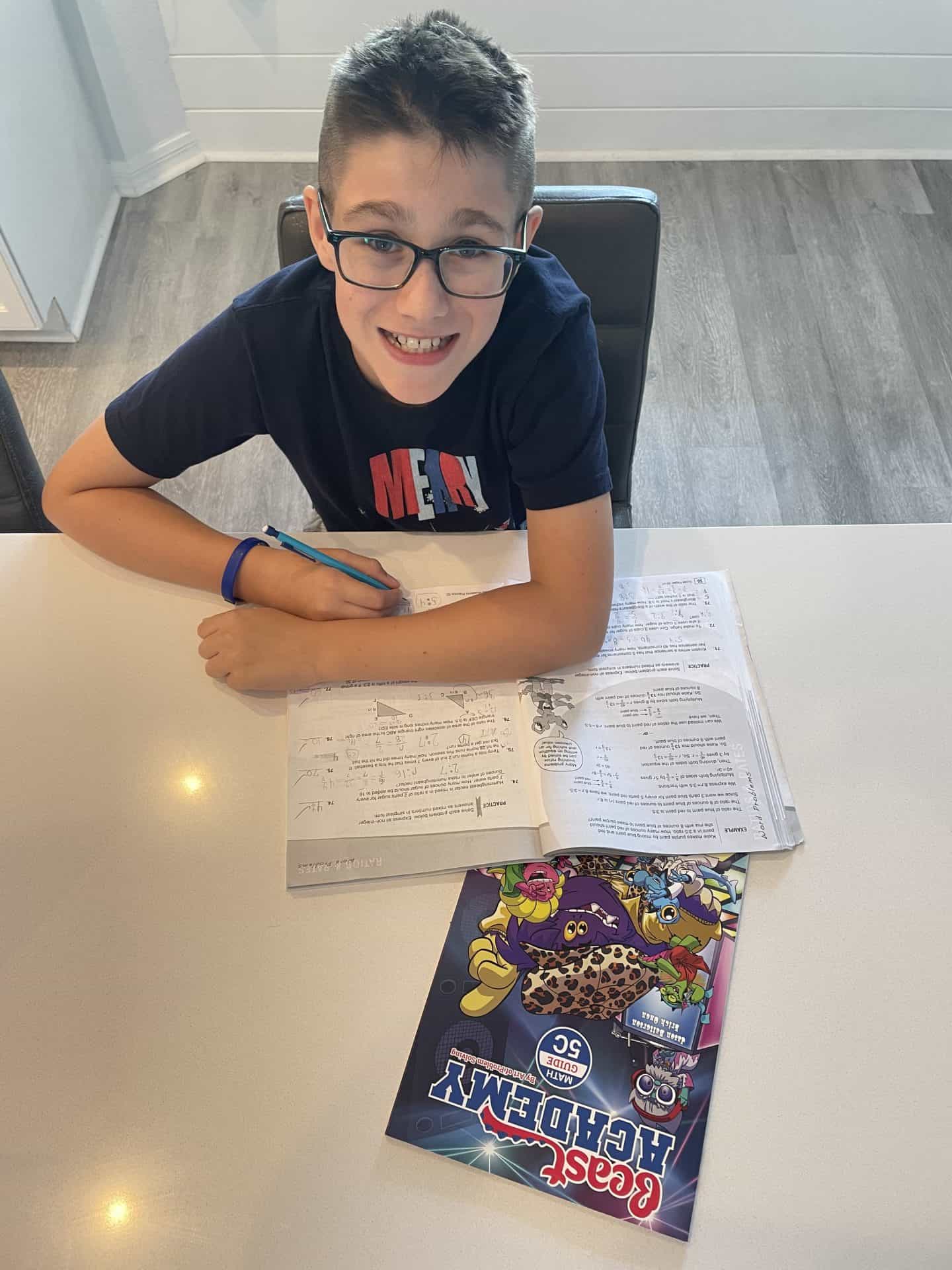
Teaching Textbooks (Best for Independent Learning)
A self-paced, interactive program that offers automated grading, video explanations, and built-in practice problems. Teaching Textbooks is well-suited for students who prefer a gentle approach to math without an overwhelming workload.
Mr. D Math (Best for Live & Structured Instruction)
Mr D. Math is a highly regarded program offering live and self-paced courses for pre-algebra and beyond. It’s a great option for families looking for structured lessons with real instructor support.
Supplementary Math Resources
- Middle school math board games are a great way to make learning hands-on and interactive.
- Prodigy Game is a fun, game-based math platform that reinforces key concepts.
- The Big Fat Notebook (Math Edition) is a concise and engaging review book for weekly reinforcement.
Language Arts Homeschool Curriculum
A strong 6th-grade language arts curriculum should cover literature, reading comprehension, writing, spelling, vocabulary, and grammar.
At this stage, students refine their reading and analytical skills while building a solid foundation in composition and language mechanics.
Below are some of the best resources we’ve found for middle school language arts.
Literature & Reading
We use Learning Language Arts Through Literature as our primary homeschool literature curriculum.
This literature-based program integrates reading, writing, grammar, and vocabulary into engaging lessons.
The structured approach encourages critical thinking and deepens comprehension by focusing on classic and modern literature.
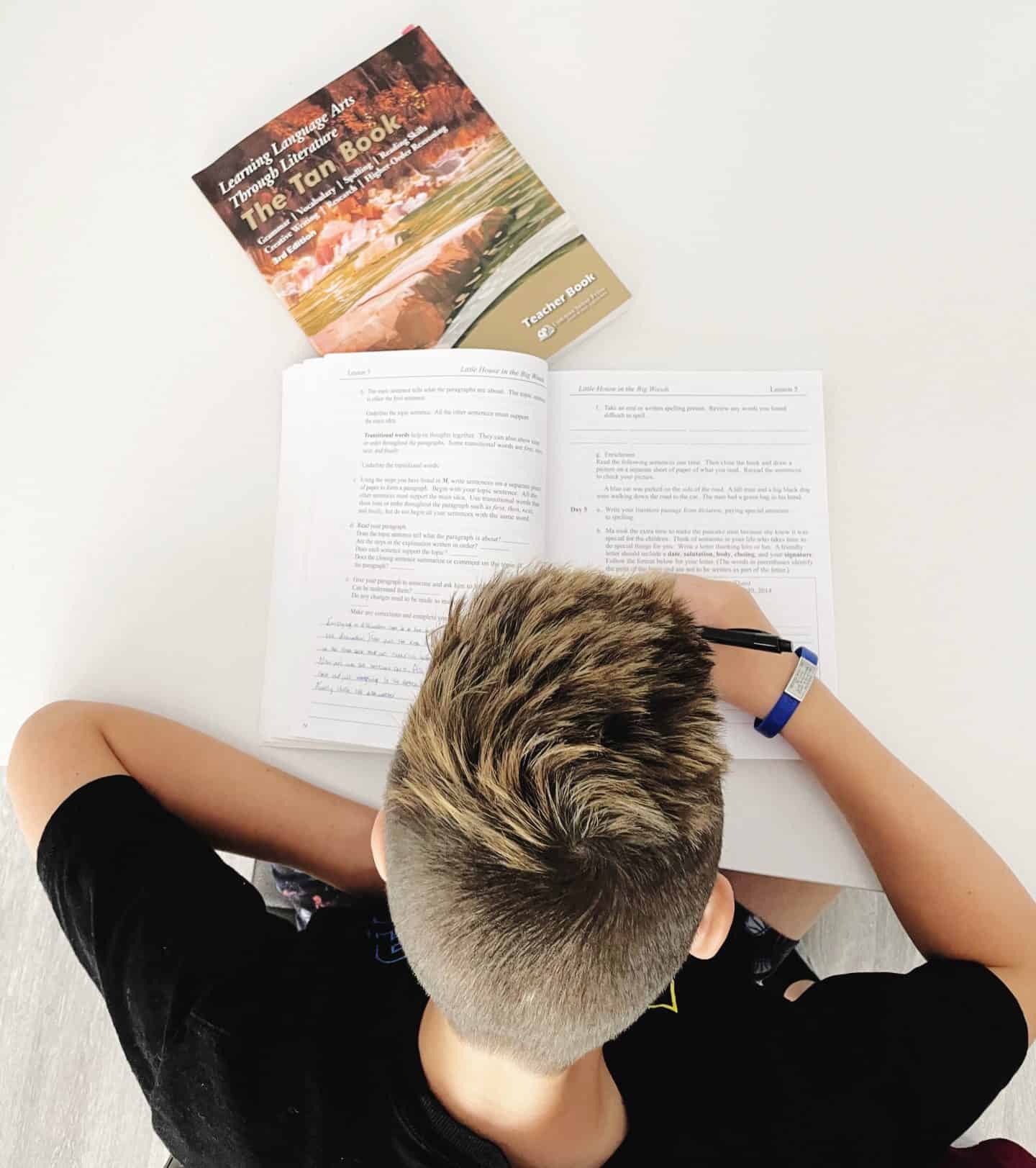
For independent reading, we allow freedom of choice to keep motivation high. Recent favorites include:
- I Funny by James Patterson
- Ungifted by Gordon Korman
- Upcoming: A Shakespeare introduction to expose new literary styles
To make reading even more engaging, we use a book bingo challenge, where students earn small rewards for completing different reading tasks.
Writing & Grammar
For grammar and writing instruction, Spectrum Language Arts provides structured lessons with practice exercises and clear explanations.
To reinforce key concepts, we supplement with The Big Fat Notebook (English Edition), a great resource for reviewing grammar, sentence structure, and composition techniques.
If you’re looking for additional grammar-focused resources, IEW (Institute for Excellence in Writing) and Fix It! Grammar are popular alternatives for middle school.
Spelling & Vocabulary
As a spelling curriculum, Spectrum Spelling has been an effective choice, offering progressive lessons that build confidence and retention. We also incorporate Spelling Bee Words as a fun way to challenge and expand word knowledge.
For vocabulary, we focus on word roots and context-based learning, using:
- Word Roots by Critical Thinking Co.– Builds understanding of Greek and Latin roots
- Big Fat Notebook for English – Reinforces spelling and vocabulary in a structured format
6th Grade Science Curriculum
A strong 6th-grade homeschool science curriculum should combine structured lessons, hands-on experiments, and opportunities for independent exploration.
At this stage, students are ready to engage with earth science, life science, and physical science while developing critical thinking skills through experimentation.
Core Science Curriculum – Real Science Odyssey
For a secular, hands-on approach to science, we use Real Science Odyssey. This curriculum offers:
- Comprehensive lesson plans covering multiple branches of science
- Hands-on experiments that reinforce key concepts
- Interactive activities that encourage deeper understanding
Each unit integrates reading, lab work, and critical thinking exercises, making it a well-rounded choice for middle school learners.
We still like to use the Big Fat Notebook (Science Edition) as a supplement.
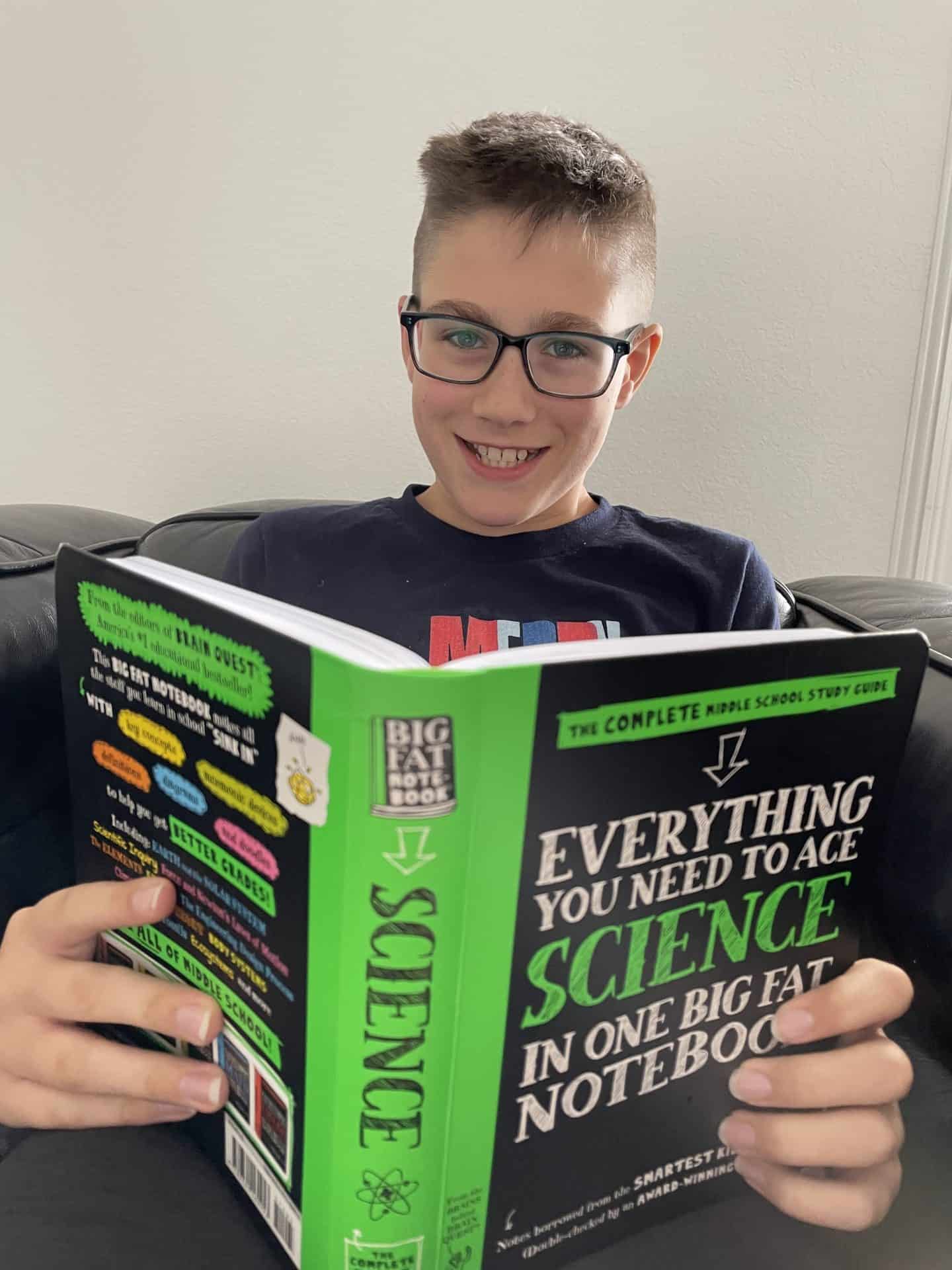
Hands-On Science with Kits & Experiments
To supplement formal lessons, we incorporate science kits and hands-on activities, which make learning engaging and practical.
These allow students to explore key concepts through experimentation and discovery. Some of our favorite options include:
- KiwiCo Labs – STEM-based engineering and science projects
- Smithsonian Mega Science Lab – Covers chemistry, biology, and physics in one kit
- Magic School Bus Science Kits – Fun, interactive experiments for young scientists
Using science kits enhances curiosity, encourages independent learning, and makes abstract concepts tangible.
Secular History Curriculum
A strong 6th-grade history curriculum should go beyond memorizing dates and events, encouraging students to analyze historical themes, think critically, and connect past events to the present.
For a secular approach to history, we’ve found a combination of structured curriculum and reference books to be the most effective.
Core History Curriculum – History Odyssey
Our top choice for a secular curriculum is History Odyssey by Pandia Press. This program offers:
- Comprehensive lesson plans covering ancient, world, and American history
- A critical-thinking approach that emphasizes analysis over rote memorization
- Engaging readings and activities to make history interactive
History Odyssey combines primary source analysis, literature-based learning, and map work, making it a well-rounded and immersive option for middle schoolers.
Supplementary History Resources
In addition to History Odyssey, we incorporate reference books that provide visual aids, timelines, and historical context:
- The Big Fat Notebook For History – A concise, engaging history guide for middle schoolers
- Kingfisher History Encyclopedia – A visually rich resource covering global history with detailed illustrations
These reinforce key concepts, provide additional context, and encourage independent research, making history both informative and engaging.
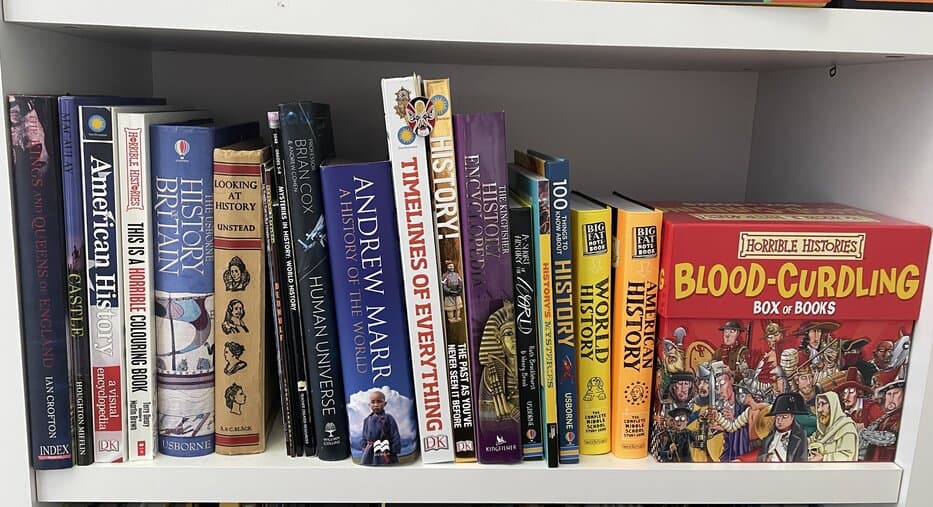
Looking for more options? Explore the best homeschool social studies curriculum covering geography, civics, and world cultures!
6th Grade Geography Curriculum
While geography isn’t a primary focus this year, we’re still incorporating interactive learning through 180 days of geography, hands-on activities, and field trips.
Our approach emphasizes U.S. geography, with a focus on mapping skills and state memorization using puzzles and games.
For families wanting a full geography curriculum, Trail Guide to U.S. Geography and DK Geography Workbooks offer structured lessons with engaging activities.
Even with a lighter focus, integrating a geography curriculum into daily learning keeps it engaging and relevant!
Planning ahead? Check out the best seventh grade homeschool curriculum to find engaging and well-structured options for next year!
Spanish Curriculum
Spanish is an important skill, so we’re using a mix of interactive apps, live instruction, and workbooks to make learning engaging and effective.
We continue using Duolingo, a free and gamified platform that keeps language practice fun. To add structured learning, we’re incorporating Outschool Spanish classes, which provide live instruction and real-time conversation practice.
For extra reinforcement, we use two middle school workbooks:
- Skills for Success Middle School Spanish – Covers essential vocabulary and grammar.
- Carson Dellosa Skill Builders: Spanish I – Provides structured exercises to build fluency.
For more options, check out our guide to the best homeschool Spanish curriculum, featuring top resources to support language learning at home!
6th Grade Electives & Enrichment
A well-rounded homeschool curriculum goes beyond core subjects.
Electives and enrichment activities help develop practical life skills, creativity, problem-solving, and personal interests, giving students a more engaging and well-balanced education.
Whether it’s technology, financial literacy, music, or physical education, these subjects provide opportunities for hands-on learning and real-world application.
Coding & Technology
We’re using The Big Fat Notebook for Computer Science & Coding as a foundation for coding skills. For more interactive practice, good coding websites for kids offer engaging lessons in game design, programming, and logic.
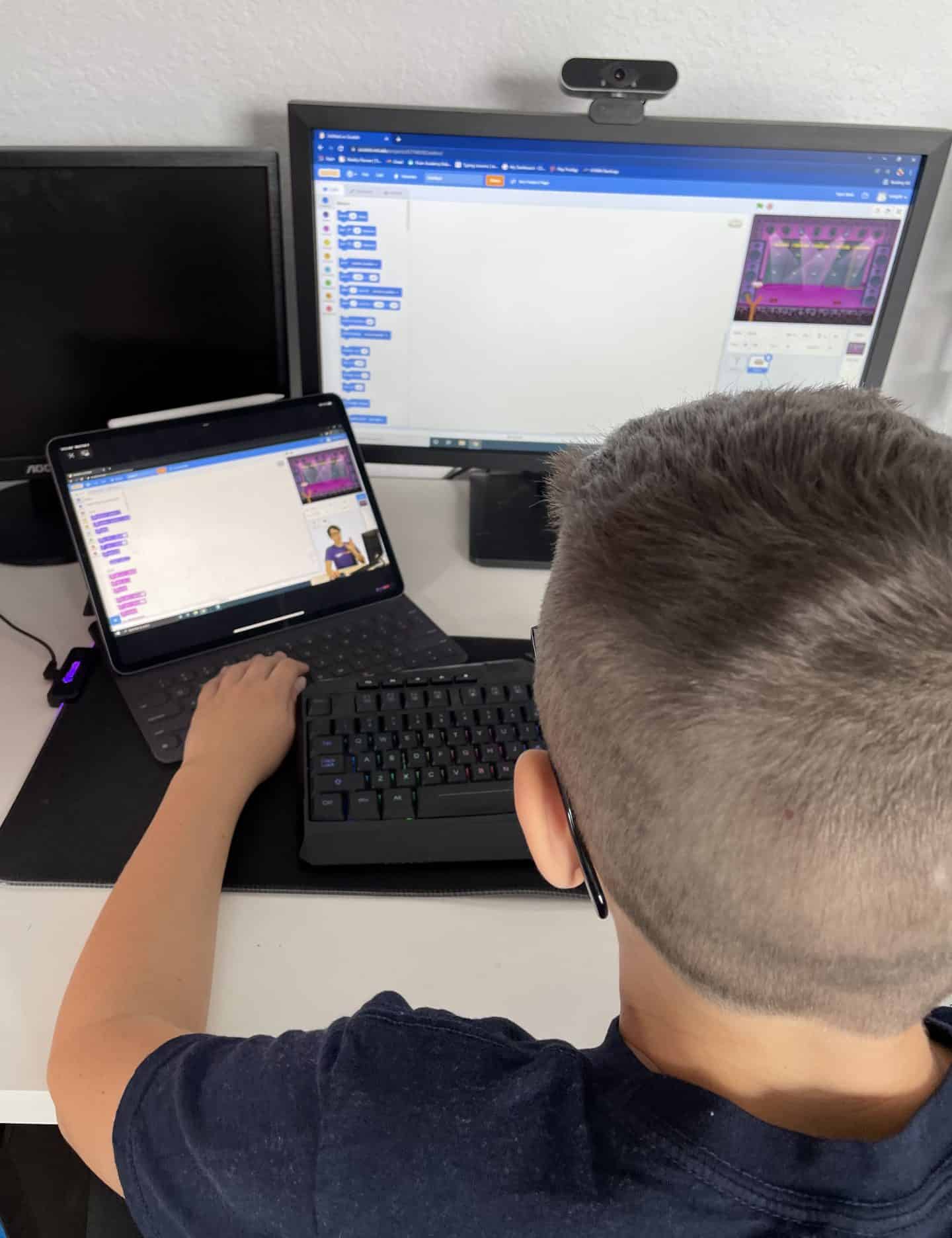
Financial Literacy
We’ve found MoneyTime to be a great tool for teaching money management and financial decision-making. It’s an interactive platform that helps middle schoolers understand savings, budgeting, and investing.
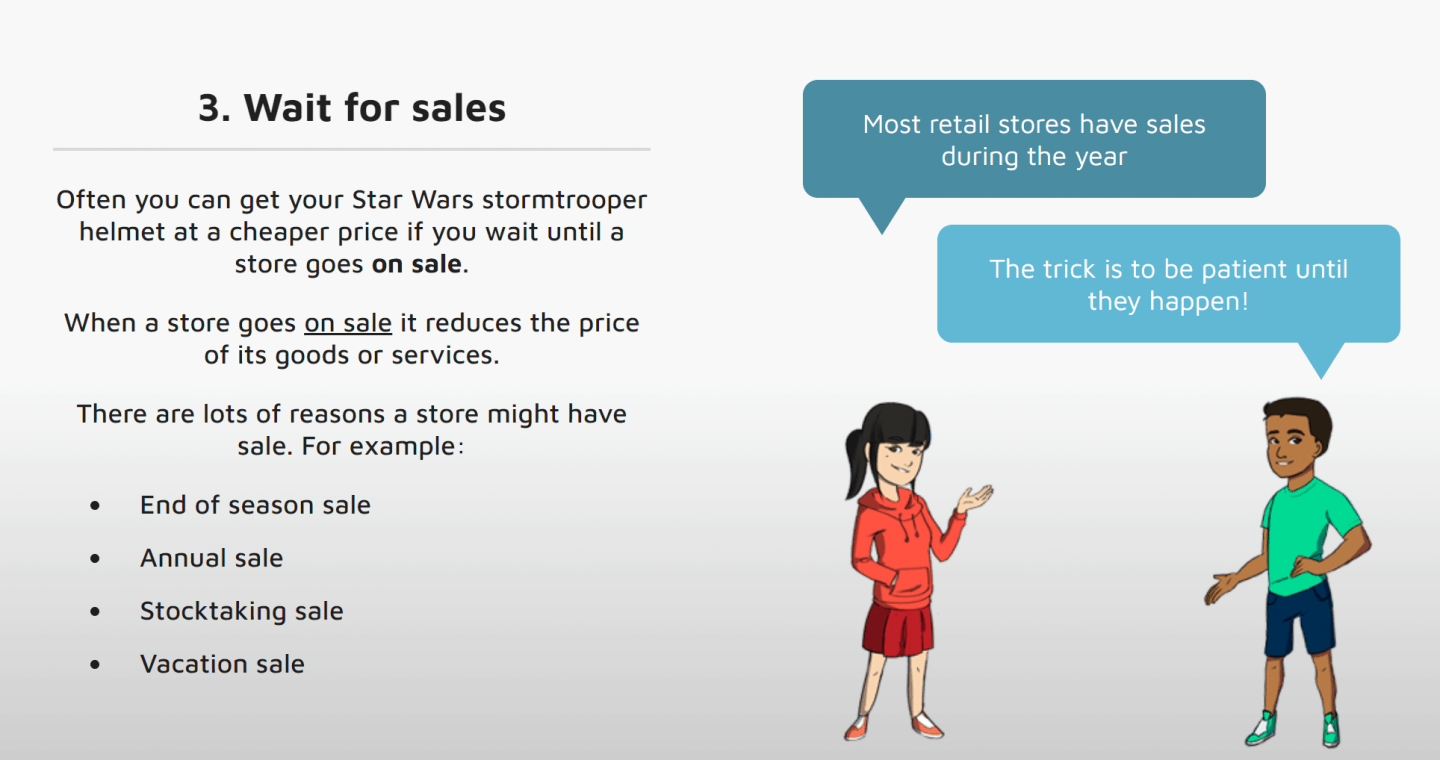
Typing Skills
We recently introduced Typesy, a structured homeschool typing curriculum that adapts to skill levels with interactive lessons and progress tracking.
Strong typing skills are essential in today’s digital world, and this curriculum makes learning efficient and fun.
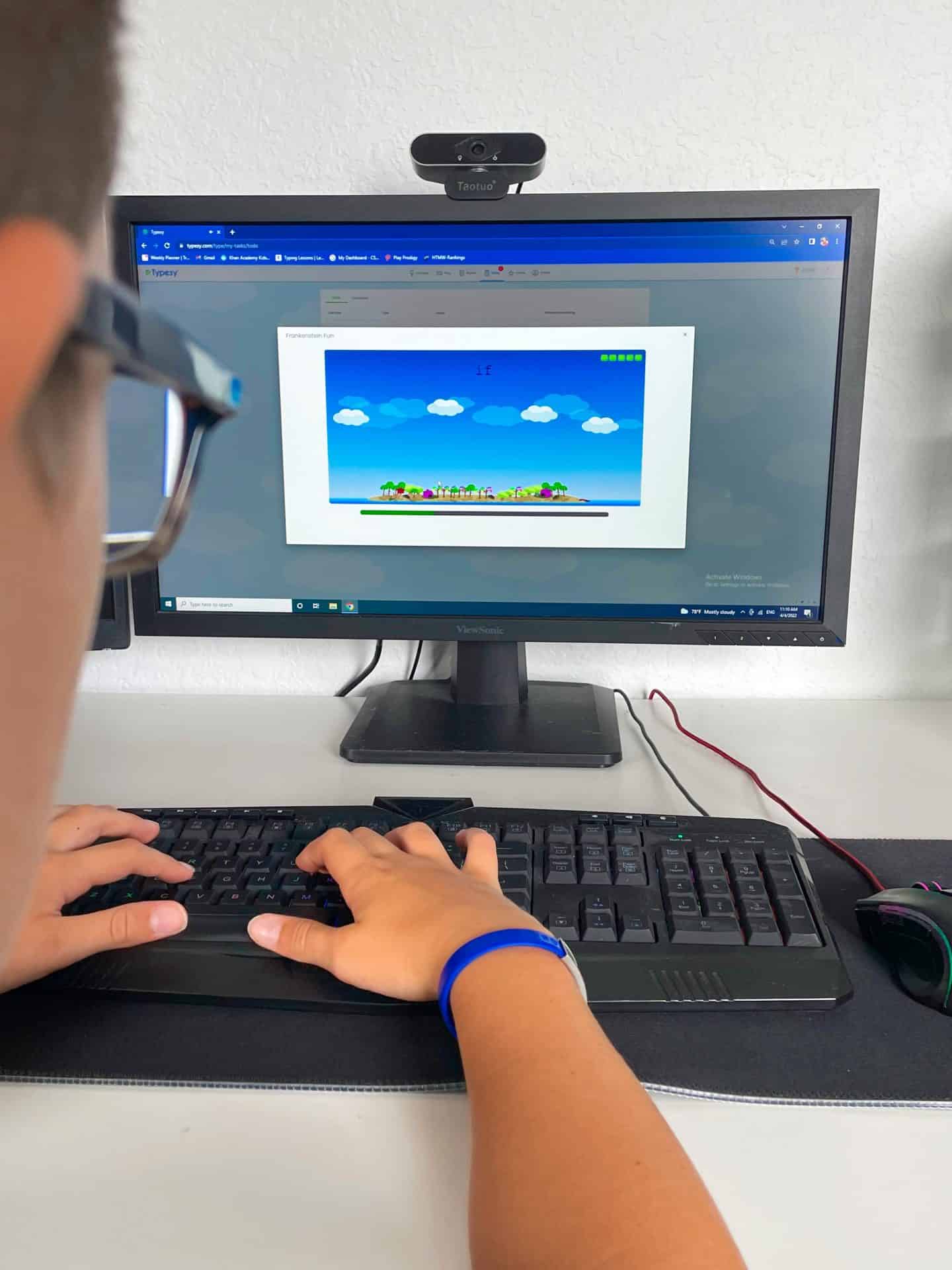
Life Skills
We incorporate cooking into our homeschool by having our child prepare a meal every other week using the Best Kids Cookbook. Learning to cook teaches responsibility, math, and real-world problem-solving.
Music
Music remains an important part of our curriculum. We use online piano lessons and encourage daily practice with engaging sheet music, such as Music From the Star Wars Trilogy.
For more resources, check out our homeschool music curriculum recommendations.
Physical Education
Our PE routine includes basketball, swimming, and outdoor activities. Physical movement is essential for focus and overall well-being, and we ensure our child stays active through sports and structured workouts.
For more ideas, check out our best PE activities for homeschoolers.

Homeschool Testing & Assessment
Standardized testing isn’t required for all homeschoolers, but it can be a helpful tool to assess progress and identify areas that may need more focus. We use the MAP test from Homeschool Boss, which provides:
- A clear benchmark for academic progress
- Insight into strengths and areas for improvement
- A smooth transition to the next grade level
Testing isn’t the only way to track progress—portfolio reviews, project-based assessments, and skill mastery checklists can also be effective. Finding the right evaluation method ensures students stay on track while keeping learning stress-free.
6th Grade Homeschool Schedule
A structured homeschool routine helps keep lessons engaging while maintaining flexibility for interest-based learning.
Here’s a typical day in our 6th-grade homeschool:
- 8am – Breakfast while watching CNN10 and Tour The States
- 8.30am – Math – Beast Academy
- 9.30am – Prodigy Math
- 9.45am English – writing, spelling, vocabulary, and grammar
- 11am Science – Experiments, workbooks, and subscription box
- 12pm – Lunch – Free Choices – Curiosity Stream, Drawing, Lego, Basketball, Piano
- 1pm – Shakespeare
- 2pm – History
- 3pm – Typing
- 3.15pm Coding
- 3.45pm Spanish
- 4pm – Finish
- Bedtime – Read a book of choice for 30 minutes
This schedule keeps core subjects structured while allowing room for creative exploration, hands-on learning, and independent study.
Adjusting the routine as needed helps maintain engagement without burnout.
Last Updated on 7 April 2025 by Clare Brown

